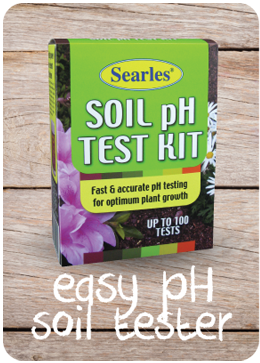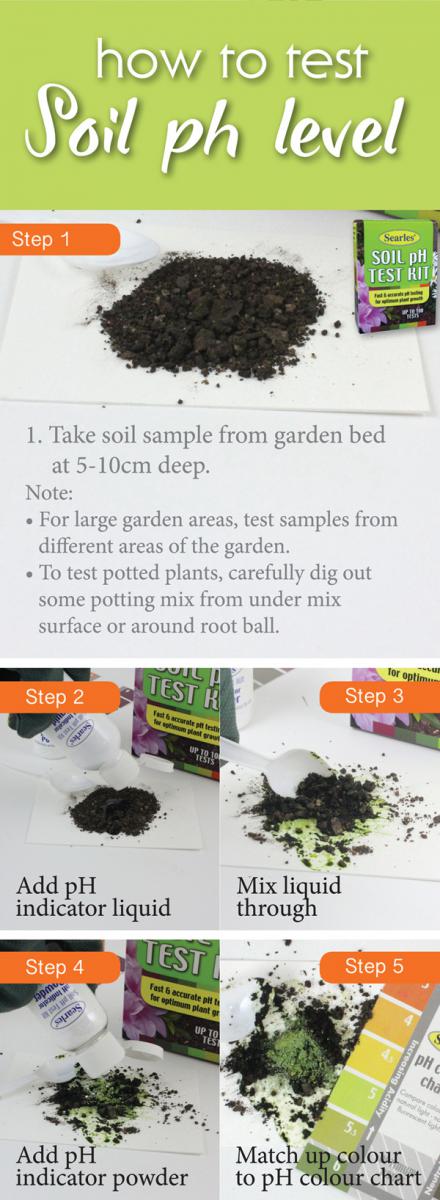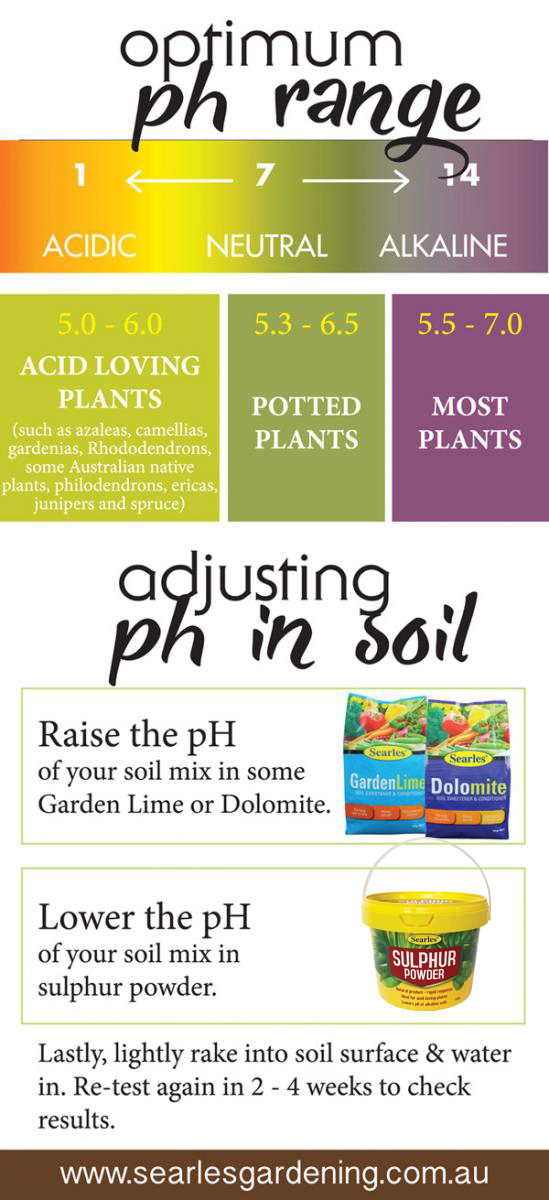How to test pH Level in Garden Soils
What is pH levels in soil
The pH scale measures of level ‘potential hydrogen’ ions in the soil which makes soils acidic or alkaline. The pH scale range is from 0 (very acidic) to 14 (very alkaline), 7 being neutral.
How does pH affect plants?
The level of pH in soils can affect plant growth. If the pH is too acidic (less than 5.5) or alkaline (over 7.5) particular nutrients become less available for the plant to absorb or too high in concentration and an imbalance of nutrients occurs. This can result in plant growth and performance being greatly affected by too much availability of certain nutrients or the inability for the nutrients to be released for root absorption. Fluctuations in pH levels can also affect the health of microbial activity in the soil. Soils neutral in pH (7.0) will benefit the most by making essential nutrients, such as, nitrogen and phosphorus more available for absorption.
Optimum pH level for garden soils
Optimum pH level for most plants to have the greatest availability of nutrient absorption is between 5.5 to 7.0. It is beneficial when planting new gardens to do a quick pH before planting. Searles Soil pH test kit is easy to use and only takes minutes to find out the result.
Some plants such as azaleas, camellia, gardenias, rhododendrons, some Australian native plants, philodendrons, ericas, junipers and spruce grow more effectively in acidic soils due to their nutrient requirements. Acid loving plants optimum pH range is 5.0 to 6.0. Potting mix pH is generally slightly higher in acidity (5.3-6.5).
How to adjust the pH level in soils
Raise the pH To raise the pH level of your soil mix, add in some Searles Garden Lime or Dolomite as per the packet directions.
Lower the pH To lower the pH level of your soil mix, add in Sulphur powder.
Lastly, lightly rake into soil surface & water in. Re-test again in 2 - 4 weeks to check pH level results. |
 |






